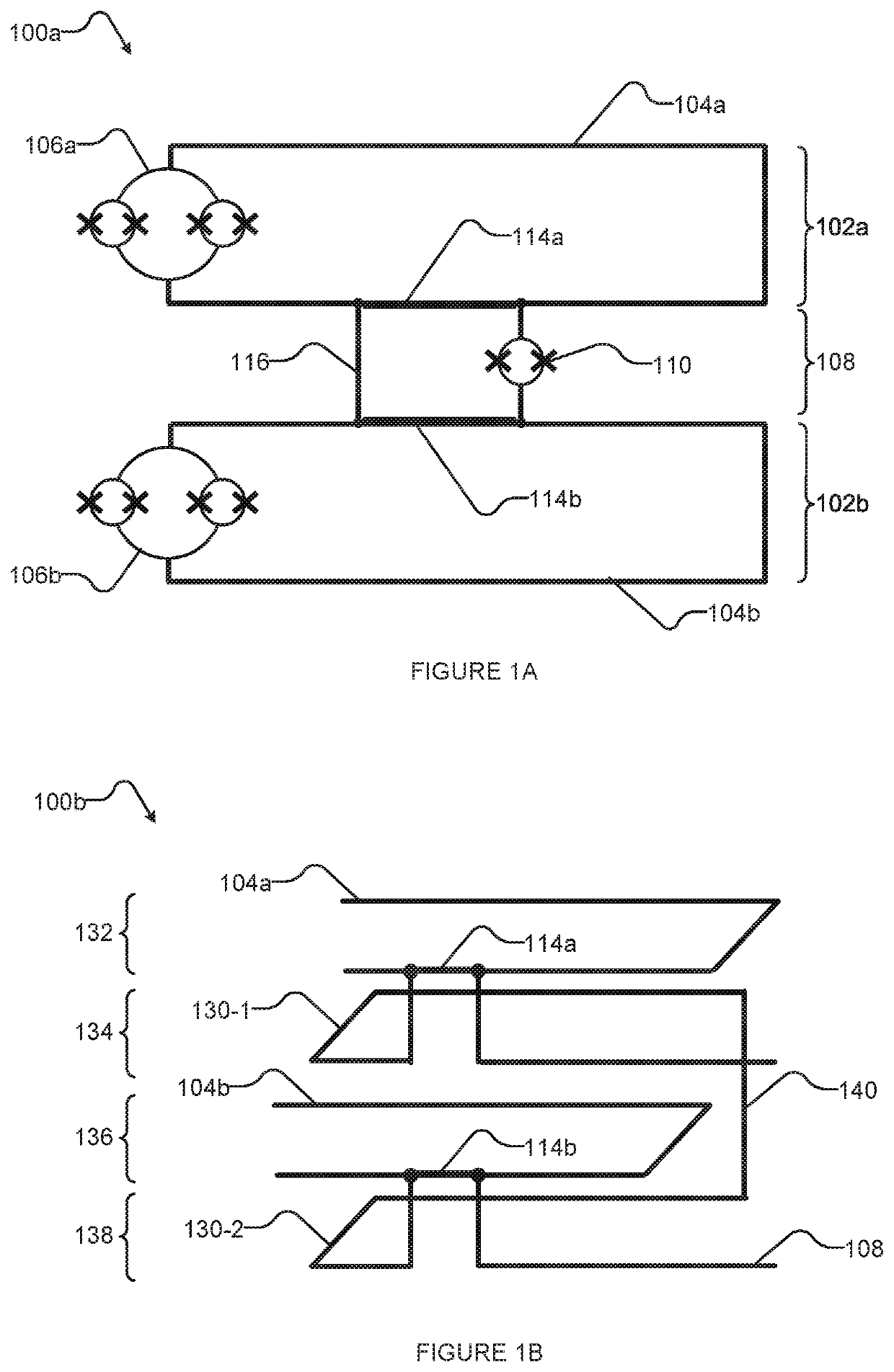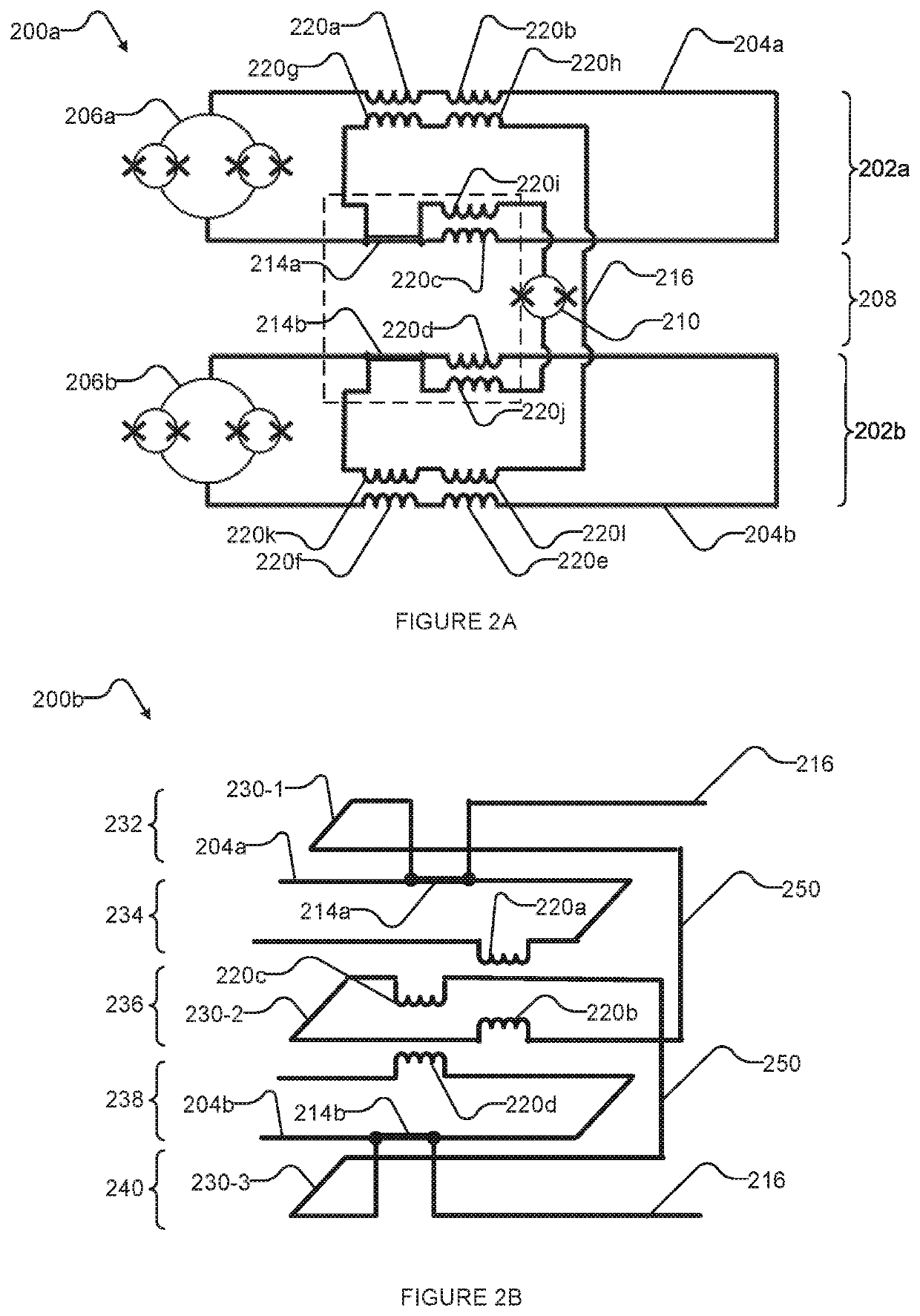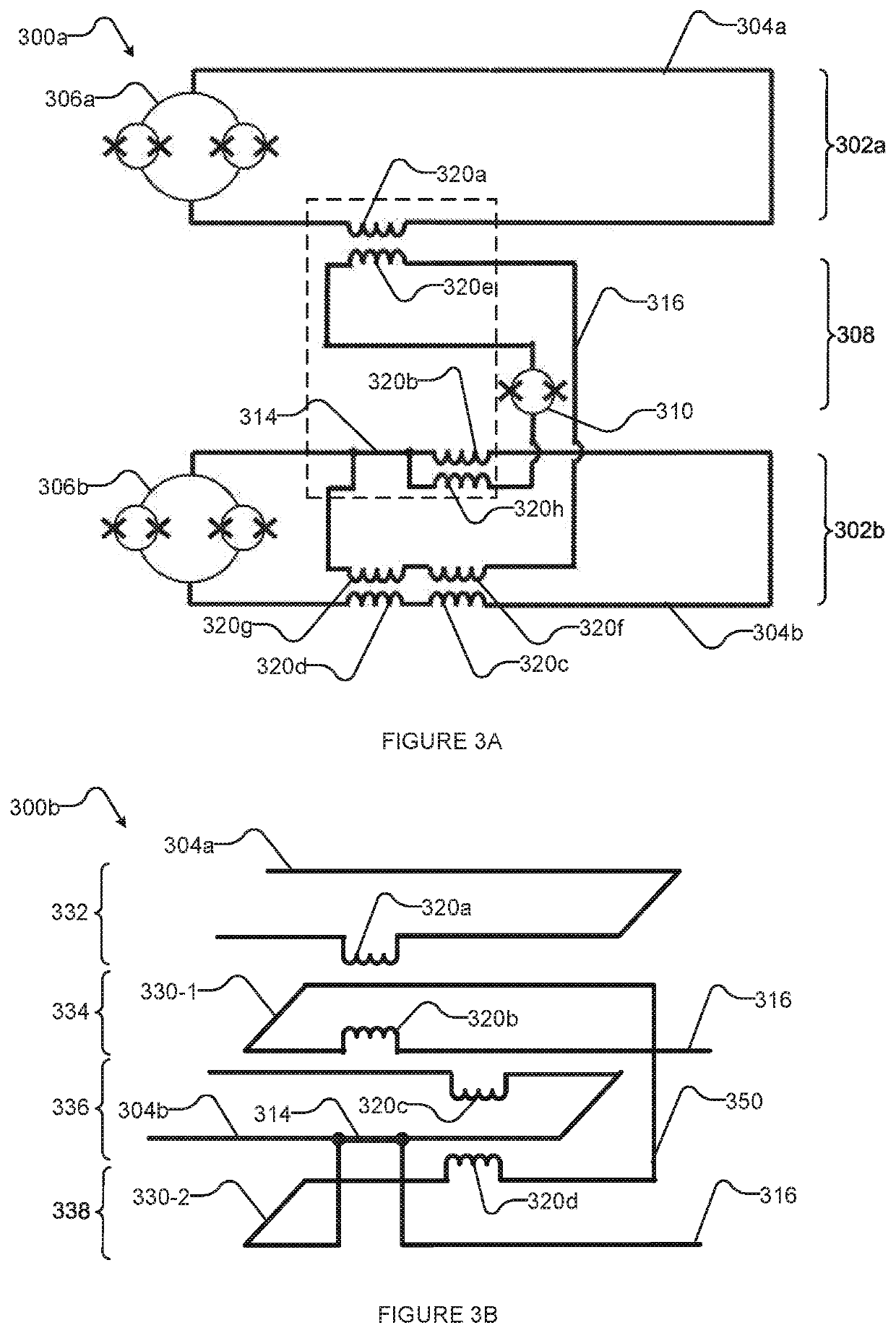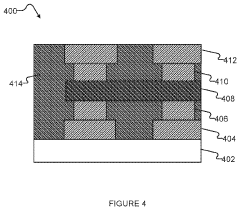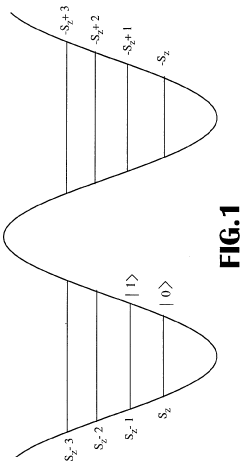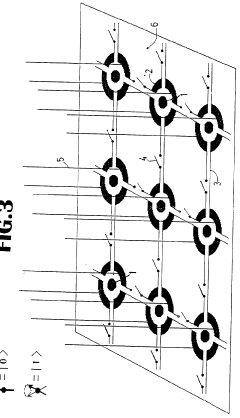How to Maximize Ferrofluid's Efficiency in Quantum Computing Systems?
JUL 9, 20259 MIN READ
Generate Your Research Report Instantly with AI Agent
Patsnap Eureka helps you evaluate technical feasibility & market potential.
Ferrofluid in QC: Background and Objectives
Ferrofluids, a unique class of magnetic nanomaterials, have recently emerged as a promising candidate for enhancing quantum computing systems. These colloidal suspensions of magnetic nanoparticles in a carrier fluid exhibit remarkable properties that align with the stringent requirements of quantum computing environments. The integration of ferrofluids into quantum computing systems represents a convergence of nanotechnology and quantum physics, potentially offering solutions to some of the most pressing challenges in the field.
The development of ferrofluids dates back to the 1960s when NASA scientist Steve Papell invented them for use in rocket fuel. Since then, their applications have expanded across various industries, from mechanical engineering to biomedical sciences. However, their potential in quantum computing has only recently come to light, marking a new frontier in their technological evolution.
In the context of quantum computing, ferrofluids present unique opportunities for improving system efficiency. Their ability to respond to magnetic fields with high precision and their thermal management capabilities make them particularly attractive for addressing two critical aspects of quantum computing: qubit control and heat dissipation. As quantum systems scale up, these challenges become increasingly significant, necessitating innovative solutions.
The primary objective of integrating ferrofluids into quantum computing systems is to maximize their efficiency in enhancing qubit performance and system stability. This involves leveraging the ferrofluid's magnetic properties to achieve more precise qubit manipulation, potentially leading to higher fidelity quantum gates. Additionally, the fluid's thermal conductivity could be harnessed to improve heat management in quantum processors, a crucial factor in maintaining coherence times and reducing error rates.
Another key goal is to explore how ferrofluids can contribute to the miniaturization and scalability of quantum computing hardware. Their fluid nature and responsiveness to magnetic fields could potentially lead to more compact and flexible quantum architectures, addressing the spatial constraints that currently limit the scalability of many quantum computing platforms.
Furthermore, researchers aim to investigate the potential of ferrofluids in creating novel quantum sensing devices. The unique magnetic properties of these fluids could enable the development of highly sensitive magnetometers or other quantum sensors, expanding the applications of quantum technology beyond computation.
As we delve deeper into the integration of ferrofluids in quantum computing, it is crucial to consider the multidisciplinary nature of this endeavor. Success in this field will require collaboration between experts in quantum physics, materials science, nanotechnology, and engineering. The path forward involves not only theoretical advancements but also significant experimental work to translate the potential of ferrofluids into practical quantum computing solutions.
The development of ferrofluids dates back to the 1960s when NASA scientist Steve Papell invented them for use in rocket fuel. Since then, their applications have expanded across various industries, from mechanical engineering to biomedical sciences. However, their potential in quantum computing has only recently come to light, marking a new frontier in their technological evolution.
In the context of quantum computing, ferrofluids present unique opportunities for improving system efficiency. Their ability to respond to magnetic fields with high precision and their thermal management capabilities make them particularly attractive for addressing two critical aspects of quantum computing: qubit control and heat dissipation. As quantum systems scale up, these challenges become increasingly significant, necessitating innovative solutions.
The primary objective of integrating ferrofluids into quantum computing systems is to maximize their efficiency in enhancing qubit performance and system stability. This involves leveraging the ferrofluid's magnetic properties to achieve more precise qubit manipulation, potentially leading to higher fidelity quantum gates. Additionally, the fluid's thermal conductivity could be harnessed to improve heat management in quantum processors, a crucial factor in maintaining coherence times and reducing error rates.
Another key goal is to explore how ferrofluids can contribute to the miniaturization and scalability of quantum computing hardware. Their fluid nature and responsiveness to magnetic fields could potentially lead to more compact and flexible quantum architectures, addressing the spatial constraints that currently limit the scalability of many quantum computing platforms.
Furthermore, researchers aim to investigate the potential of ferrofluids in creating novel quantum sensing devices. The unique magnetic properties of these fluids could enable the development of highly sensitive magnetometers or other quantum sensors, expanding the applications of quantum technology beyond computation.
As we delve deeper into the integration of ferrofluids in quantum computing, it is crucial to consider the multidisciplinary nature of this endeavor. Success in this field will require collaboration between experts in quantum physics, materials science, nanotechnology, and engineering. The path forward involves not only theoretical advancements but also significant experimental work to translate the potential of ferrofluids into practical quantum computing solutions.
Market Analysis for Quantum Computing
The quantum computing market is experiencing rapid growth and attracting significant investment from both private and public sectors. As of 2023, the global quantum computing market size was valued at approximately $1.1 billion, with projections indicating a compound annual growth rate (CAGR) of over 30% for the next decade. This growth is driven by increasing demand for advanced computing solutions in various industries, including finance, healthcare, cybersecurity, and logistics.
Major technology companies such as IBM, Google, Microsoft, and Intel are heavily investing in quantum computing research and development. Additionally, numerous startups and specialized quantum computing firms have emerged, contributing to a diverse and competitive landscape. Government initiatives, particularly in the United States, China, and European Union, are also fueling market expansion through substantial funding and strategic programs.
The potential applications of quantum computing span across multiple sectors. In finance, quantum algorithms promise to revolutionize portfolio optimization, risk analysis, and fraud detection. The healthcare industry anticipates breakthroughs in drug discovery and personalized medicine. Cybersecurity stands to benefit from quantum-resistant encryption methods, while logistics and supply chain management could see significant improvements in optimization problems.
However, the market faces several challenges. The high cost of quantum hardware, the need for specialized skills, and the current limitations in qubit stability and error correction are significant barriers to widespread adoption. Despite these challenges, the potential for quantum supremacy in solving complex problems is driving continued investment and research.
The integration of ferrofluids in quantum computing systems represents a niche but potentially transformative area within this market. Ferrofluids, with their unique magnetic properties, could address some of the key challenges in quantum computing, particularly in areas of thermal management and qubit isolation. As quantum systems scale up, efficient cooling and maintaining qubit coherence become critical factors, making ferrofluid-based solutions increasingly relevant.
Market analysts predict that as quantum computing technology matures, the demand for specialized components and materials like ferrofluids will grow. This presents opportunities for materials science companies and specialized suppliers to enter the quantum computing supply chain. The success of ferrofluid applications in quantum systems could potentially accelerate the overall market growth by addressing key technical bottlenecks.
Major technology companies such as IBM, Google, Microsoft, and Intel are heavily investing in quantum computing research and development. Additionally, numerous startups and specialized quantum computing firms have emerged, contributing to a diverse and competitive landscape. Government initiatives, particularly in the United States, China, and European Union, are also fueling market expansion through substantial funding and strategic programs.
The potential applications of quantum computing span across multiple sectors. In finance, quantum algorithms promise to revolutionize portfolio optimization, risk analysis, and fraud detection. The healthcare industry anticipates breakthroughs in drug discovery and personalized medicine. Cybersecurity stands to benefit from quantum-resistant encryption methods, while logistics and supply chain management could see significant improvements in optimization problems.
However, the market faces several challenges. The high cost of quantum hardware, the need for specialized skills, and the current limitations in qubit stability and error correction are significant barriers to widespread adoption. Despite these challenges, the potential for quantum supremacy in solving complex problems is driving continued investment and research.
The integration of ferrofluids in quantum computing systems represents a niche but potentially transformative area within this market. Ferrofluids, with their unique magnetic properties, could address some of the key challenges in quantum computing, particularly in areas of thermal management and qubit isolation. As quantum systems scale up, efficient cooling and maintaining qubit coherence become critical factors, making ferrofluid-based solutions increasingly relevant.
Market analysts predict that as quantum computing technology matures, the demand for specialized components and materials like ferrofluids will grow. This presents opportunities for materials science companies and specialized suppliers to enter the quantum computing supply chain. The success of ferrofluid applications in quantum systems could potentially accelerate the overall market growth by addressing key technical bottlenecks.
Current Challenges in Ferrofluid-based QC
The integration of ferrofluids in quantum computing systems presents several significant challenges that researchers and engineers are actively working to overcome. One of the primary obstacles is maintaining the stability and uniformity of the ferrofluid under the intense magnetic fields required for quantum operations. Fluctuations in the ferrofluid's magnetic properties can lead to decoherence and errors in quantum computations, compromising the system's overall efficiency.
Another critical challenge lies in the precise control and manipulation of ferrofluid at the quantum scale. While ferrofluids respond readily to magnetic fields, achieving the level of precision necessary for quantum operations requires advanced control mechanisms and sophisticated algorithms. This becomes particularly complex when dealing with the quantum effects that emerge at nanoscale levels.
Heat management poses a significant hurdle in ferrofluid-based quantum computing systems. The intense magnetic fields and quantum operations generate substantial heat, which can alter the ferrofluid's properties and potentially disrupt quantum states. Developing effective cooling systems that can operate in close proximity to sensitive quantum components without introducing additional interference is a major engineering challenge.
The interface between the ferrofluid and the quantum bits (qubits) presents another area of difficulty. Ensuring consistent and reliable interaction between the ferrofluid and the qubits while minimizing unwanted effects such as magnetic noise or physical disturbances is crucial for maintaining quantum coherence and improving computational accuracy.
Scalability remains a persistent challenge in ferrofluid-based quantum computing. As systems grow in size and complexity, maintaining the precise control and stability of ferrofluids becomes increasingly difficult. This scalability issue is compounded by the need to integrate ferrofluid components with other quantum computing technologies and traditional electronic systems.
Material compatibility and longevity are additional concerns. The ferrofluid must remain stable and maintain its properties over extended periods, resisting degradation from repeated use, exposure to varying magnetic fields, and potential chemical interactions with other materials in the quantum computing system. Developing ferrofluids with enhanced durability and consistent performance characteristics is an ongoing research focus.
Lastly, the challenge of measurement and characterization of ferrofluid behavior in quantum systems cannot be overstated. Developing non-invasive techniques to monitor and analyze ferrofluid dynamics without disturbing the delicate quantum states is essential for optimizing system performance and troubleshooting issues in real-time.
Another critical challenge lies in the precise control and manipulation of ferrofluid at the quantum scale. While ferrofluids respond readily to magnetic fields, achieving the level of precision necessary for quantum operations requires advanced control mechanisms and sophisticated algorithms. This becomes particularly complex when dealing with the quantum effects that emerge at nanoscale levels.
Heat management poses a significant hurdle in ferrofluid-based quantum computing systems. The intense magnetic fields and quantum operations generate substantial heat, which can alter the ferrofluid's properties and potentially disrupt quantum states. Developing effective cooling systems that can operate in close proximity to sensitive quantum components without introducing additional interference is a major engineering challenge.
The interface between the ferrofluid and the quantum bits (qubits) presents another area of difficulty. Ensuring consistent and reliable interaction between the ferrofluid and the qubits while minimizing unwanted effects such as magnetic noise or physical disturbances is crucial for maintaining quantum coherence and improving computational accuracy.
Scalability remains a persistent challenge in ferrofluid-based quantum computing. As systems grow in size and complexity, maintaining the precise control and stability of ferrofluids becomes increasingly difficult. This scalability issue is compounded by the need to integrate ferrofluid components with other quantum computing technologies and traditional electronic systems.
Material compatibility and longevity are additional concerns. The ferrofluid must remain stable and maintain its properties over extended periods, resisting degradation from repeated use, exposure to varying magnetic fields, and potential chemical interactions with other materials in the quantum computing system. Developing ferrofluids with enhanced durability and consistent performance characteristics is an ongoing research focus.
Lastly, the challenge of measurement and characterization of ferrofluid behavior in quantum systems cannot be overstated. Developing non-invasive techniques to monitor and analyze ferrofluid dynamics without disturbing the delicate quantum states is essential for optimizing system performance and troubleshooting issues in real-time.
Existing Ferrofluid Efficiency Solutions
01 Magnetic field optimization for ferrofluid efficiency
Optimizing magnetic field strength and distribution can significantly enhance ferrofluid efficiency. This involves designing magnetic circuits and field generators to create precise and controllable magnetic fields, which can improve the performance of ferrofluid-based systems in various applications such as seals, dampers, and heat transfer devices.- Ferrofluid seal design and optimization: Improving the efficiency of ferrofluid seals through optimized design and configuration. This includes enhancing the magnetic field distribution, optimizing the seal geometry, and selecting appropriate ferrofluid compositions to minimize leakage and maximize sealing performance in various applications.
- Thermal management using ferrofluids: Utilizing ferrofluids for efficient heat transfer and thermal management in various systems. This involves designing cooling systems that leverage the unique properties of ferrofluids to enhance heat dissipation and improve overall thermal efficiency in electronic devices, machinery, and other applications.
- Ferrofluid-based energy harvesting: Developing energy harvesting systems that utilize the properties of ferrofluids to convert mechanical energy into electrical energy. This includes designing generators and transducers that exploit the movement of ferrofluids in magnetic fields to improve energy conversion efficiency.
- Ferrofluid-enhanced bearings and lubrication: Improving the efficiency of bearings and lubrication systems by incorporating ferrofluids. This involves designing bearing systems that use ferrofluids to reduce friction, enhance load-bearing capacity, and improve overall performance in various mechanical applications.
- Ferrofluid-based sensing and measurement: Developing sensors and measurement devices that utilize ferrofluids to improve accuracy and efficiency. This includes designing instruments for measuring magnetic fields, fluid levels, and other physical properties by leveraging the unique characteristics of ferrofluids.
02 Ferrofluid composition and particle size control
The efficiency of ferrofluids can be improved by carefully controlling their composition and the size of magnetic particles. This includes selecting appropriate carrier fluids, surfactants, and magnetic materials, as well as optimizing particle size distribution to enhance stability, magnetic response, and overall performance in specific applications.Expand Specific Solutions03 Thermal management and heat transfer applications
Ferrofluids can be utilized for efficient thermal management and heat transfer in various systems. By leveraging their unique properties, such as temperature-dependent magnetic susceptibility and enhanced convection, ferrofluids can improve cooling efficiency in electronic devices, transformers, and other heat-generating equipment.Expand Specific Solutions04 Sealing and lubrication applications
Ferrofluids can be employed to create efficient seals and lubricants in mechanical systems. By utilizing their magnetic properties and fluid characteristics, ferrofluids can form adaptive seals that prevent leakage and reduce friction, leading to improved efficiency and longevity in rotating machinery, bearings, and other moving parts.Expand Specific Solutions05 Sensing and measurement applications
Ferrofluids can be used to enhance the efficiency and accuracy of various sensing and measurement devices. Their unique magnetic and fluid properties allow for the development of sensitive accelerometers, inclinometers, and other instruments that can precisely detect changes in orientation, motion, or magnetic fields.Expand Specific Solutions
Key Players in Ferrofluid QC Research
The quantum computing industry is in its early growth stage, with significant potential for expansion. The market size is projected to grow rapidly, driven by increasing investments and technological advancements. Companies like IBM, Google, and D-Wave Systems are at the forefront, developing quantum hardware and software solutions. Emerging players such as IonQ and Rigetti Computing are also making strides in quantum technology. The technology is still in its nascent stages, with varying levels of maturity across different quantum computing approaches. Superconducting and trapped-ion qubits are currently the most advanced, while topological qubits are still in early research phases. As the field progresses, we can expect increased competition and collaboration among key players to overcome technical challenges and expand practical applications.
D-Wave Systems, Inc.
Technical Solution: D-Wave Systems has been investigating the use of ferrofluids in their quantum annealing systems to improve qubit connectivity and control. Their approach involves using ferrofluid-based waveguides to enhance the coupling between qubits, potentially increasing the problem size that can be tackled by their quantum annealers. D-Wave's research suggests that ferrofluid-based coupling could lead to a 30% increase in the number of connections between qubits[3]. Additionally, the company is exploring the use of ferrofluids as a dynamic tuning mechanism for individual qubit properties, allowing for more precise control over the quantum annealing process[4].
Strengths: Enhanced qubit connectivity, potential for larger problem solving, and improved qubit control. Weaknesses: Challenges in maintaining ferrofluid stability in cryogenic environments and potential for unwanted magnetic effects.
IonQ Quantum, Inc.
Technical Solution: IonQ is exploring the use of ferrofluids in their trapped-ion quantum computing systems to enhance ion transport and cooling. Their approach involves using magnetically-guided ferrofluid channels to create more efficient pathways for moving ions between different regions of the quantum processor. IonQ's preliminary results suggest that ferrofluid-assisted ion transport could reduce ion movement times by up to 40%, potentially leading to faster quantum gate operations[5]. The company is also investigating the use of ferrofluids as a novel cooling mechanism for their ion traps, which could lead to improved qubit coherence times and overall system performance[6].
Strengths: Faster ion transport, potential for improved qubit coherence, and novel cooling mechanisms. Weaknesses: Challenges in integrating ferrofluids with existing trapped-ion technologies and potential for contamination of the ion trap environment.
Innovative Ferrofluid QC Techniques
Kinetic inductance for couplers and compact qubits
PatentActiveUS20220123048A1
Innovation
- The use of kinetic inductance materials, specifically TiN, NbN, NbTiN, WSi, and oxidized granular Al, in superconducting devices to implement galvanic kinetic inductance coupling, which reduces device size and is less sensitive to dielectric thickness variations, allowing for compact and reproducible qubits with reduced parasitic impedance.
Quantic computer based on magnetic qubits
PatentWO2001010027A1
Innovation
- A quantum computer utilizing nanometer-sized monodomain magnetic particles or molecular aggregates as qubits, operating in a millikelvin temperature range, with a high quality factor for ferromagnetic resonance, where the quantum states are manipulated using superconducting inductive elements and micro-SQUIDs, allowing for low decoherence and easy control of magnetic states without external radiation.
Quantum Error Correction Strategies
Quantum error correction strategies play a crucial role in maximizing the efficiency of ferrofluid-based quantum computing systems. These strategies are designed to mitigate the effects of decoherence and other sources of noise that can disrupt quantum states and compromise computational accuracy. One of the primary approaches in this field is the implementation of topological quantum error correction codes, which leverage the unique properties of ferrofluids to create robust qubit encodings.
Surface codes, a type of topological quantum error correction, have shown particular promise in ferrofluid-based systems. These codes utilize the magnetic properties of ferrofluids to create a two-dimensional lattice of physical qubits, where logical qubits are encoded across multiple physical qubits. This redundancy allows for the detection and correction of errors without disturbing the quantum information itself. The fluid nature of ferromagnetic particles enables dynamic reconfiguration of the lattice structure, enhancing the adaptability of error correction protocols.
Another key strategy involves the development of hybrid quantum-classical error correction algorithms. These algorithms combine the strengths of quantum error detection with classical processing techniques to optimize error correction in real-time. By leveraging the unique magnetic properties of ferrofluids, researchers have developed novel error syndrome measurement techniques that can rapidly identify and localize errors within the quantum system.
Active error suppression techniques have also been explored to enhance the efficiency of ferrofluid-based quantum computing. These methods involve the application of precisely controlled magnetic fields to counteract environmental noise and stabilize quantum states. The responsive nature of ferrofluids to magnetic stimuli makes them particularly well-suited for such dynamic error suppression strategies.
Recent advancements in machine learning have led to the development of adaptive error correction protocols specifically tailored for ferrofluid quantum systems. These protocols use neural networks to analyze error patterns and optimize correction strategies in real-time, significantly improving the overall system performance. The integration of machine learning with quantum error correction represents a promising frontier in maximizing the efficiency of ferrofluid-based quantum computing platforms.
As research in this field progresses, the focus is shifting towards developing holistic error correction frameworks that combine multiple strategies to address different types of errors simultaneously. These comprehensive approaches aim to create resilient quantum computing systems that can maintain coherence over extended periods, ultimately enabling more complex and reliable quantum computations using ferrofluid-based architectures.
Surface codes, a type of topological quantum error correction, have shown particular promise in ferrofluid-based systems. These codes utilize the magnetic properties of ferrofluids to create a two-dimensional lattice of physical qubits, where logical qubits are encoded across multiple physical qubits. This redundancy allows for the detection and correction of errors without disturbing the quantum information itself. The fluid nature of ferromagnetic particles enables dynamic reconfiguration of the lattice structure, enhancing the adaptability of error correction protocols.
Another key strategy involves the development of hybrid quantum-classical error correction algorithms. These algorithms combine the strengths of quantum error detection with classical processing techniques to optimize error correction in real-time. By leveraging the unique magnetic properties of ferrofluids, researchers have developed novel error syndrome measurement techniques that can rapidly identify and localize errors within the quantum system.
Active error suppression techniques have also been explored to enhance the efficiency of ferrofluid-based quantum computing. These methods involve the application of precisely controlled magnetic fields to counteract environmental noise and stabilize quantum states. The responsive nature of ferrofluids to magnetic stimuli makes them particularly well-suited for such dynamic error suppression strategies.
Recent advancements in machine learning have led to the development of adaptive error correction protocols specifically tailored for ferrofluid quantum systems. These protocols use neural networks to analyze error patterns and optimize correction strategies in real-time, significantly improving the overall system performance. The integration of machine learning with quantum error correction represents a promising frontier in maximizing the efficiency of ferrofluid-based quantum computing platforms.
As research in this field progresses, the focus is shifting towards developing holistic error correction frameworks that combine multiple strategies to address different types of errors simultaneously. These comprehensive approaches aim to create resilient quantum computing systems that can maintain coherence over extended periods, ultimately enabling more complex and reliable quantum computations using ferrofluid-based architectures.
Environmental Impact of Ferrofluid QC
The environmental impact of ferrofluid-based quantum computing systems is a critical consideration as this technology advances. Ferrofluids, composed of nanoscale magnetic particles suspended in a carrier fluid, present unique environmental challenges and opportunities. The production of ferrofluids involves the synthesis of nanoparticles, which can be energy-intensive and potentially generate hazardous waste. However, the small quantities required for quantum computing applications may mitigate these concerns.
In operation, ferrofluid quantum computing systems generally have a lower energy footprint compared to traditional computing methods. The magnetic properties of ferrofluids allow for efficient heat dissipation, potentially reducing cooling requirements and associated energy consumption. This improved thermal management could lead to more sustainable computing infrastructure.
The longevity and recyclability of ferrofluids in quantum computing systems are important factors. With proper maintenance, ferrofluids can remain stable for extended periods, reducing the need for frequent replacements. At the end of their lifecycle, the magnetic nanoparticles can potentially be recovered and recycled, minimizing waste and resource depletion.
However, the disposal of ferrofluids raises environmental concerns. Improper handling or accidental release could lead to contamination of soil and water systems. The nanoscale particles in ferrofluids may pose risks to aquatic ecosystems and potentially enter the food chain. Stringent protocols for handling, storage, and disposal are essential to mitigate these risks.
On a broader scale, the adoption of ferrofluid-based quantum computing could indirectly benefit the environment by enabling more efficient solutions to complex problems. Applications in climate modeling, materials science, and optimization of resource allocation could contribute to addressing environmental challenges and promoting sustainability.
The manufacturing processes for ferrofluids and associated quantum computing components should be scrutinized for opportunities to reduce environmental impact. This includes exploring green synthesis methods for nanoparticles, optimizing production efficiency, and implementing closed-loop recycling systems.
As research in this field progresses, it is crucial to conduct comprehensive life cycle assessments of ferrofluid quantum computing systems. These assessments should consider raw material extraction, manufacturing, operation, maintenance, and end-of-life disposal to provide a holistic view of environmental impacts and guide the development of more sustainable practices in quantum computing technology.
In operation, ferrofluid quantum computing systems generally have a lower energy footprint compared to traditional computing methods. The magnetic properties of ferrofluids allow for efficient heat dissipation, potentially reducing cooling requirements and associated energy consumption. This improved thermal management could lead to more sustainable computing infrastructure.
The longevity and recyclability of ferrofluids in quantum computing systems are important factors. With proper maintenance, ferrofluids can remain stable for extended periods, reducing the need for frequent replacements. At the end of their lifecycle, the magnetic nanoparticles can potentially be recovered and recycled, minimizing waste and resource depletion.
However, the disposal of ferrofluids raises environmental concerns. Improper handling or accidental release could lead to contamination of soil and water systems. The nanoscale particles in ferrofluids may pose risks to aquatic ecosystems and potentially enter the food chain. Stringent protocols for handling, storage, and disposal are essential to mitigate these risks.
On a broader scale, the adoption of ferrofluid-based quantum computing could indirectly benefit the environment by enabling more efficient solutions to complex problems. Applications in climate modeling, materials science, and optimization of resource allocation could contribute to addressing environmental challenges and promoting sustainability.
The manufacturing processes for ferrofluids and associated quantum computing components should be scrutinized for opportunities to reduce environmental impact. This includes exploring green synthesis methods for nanoparticles, optimizing production efficiency, and implementing closed-loop recycling systems.
As research in this field progresses, it is crucial to conduct comprehensive life cycle assessments of ferrofluid quantum computing systems. These assessments should consider raw material extraction, manufacturing, operation, maintenance, and end-of-life disposal to provide a holistic view of environmental impacts and guide the development of more sustainable practices in quantum computing technology.
Unlock deeper insights with Patsnap Eureka Quick Research — get a full tech report to explore trends and direct your research. Try now!
Generate Your Research Report Instantly with AI Agent
Supercharge your innovation with Patsnap Eureka AI Agent Platform!
